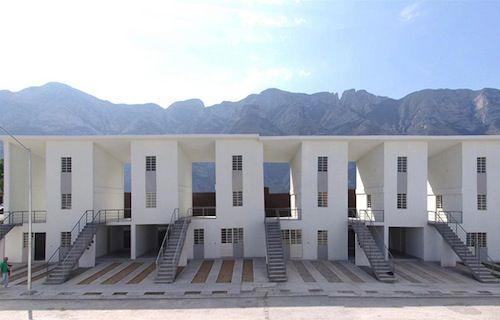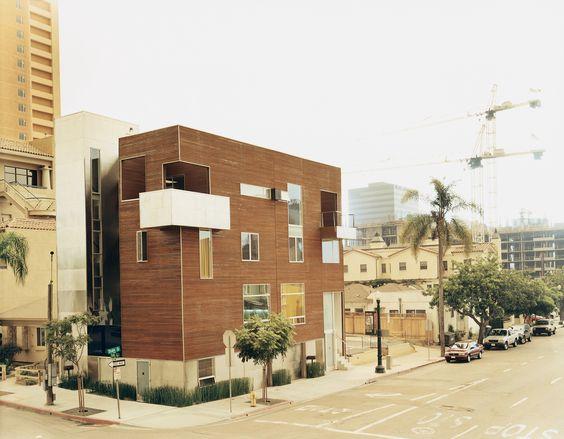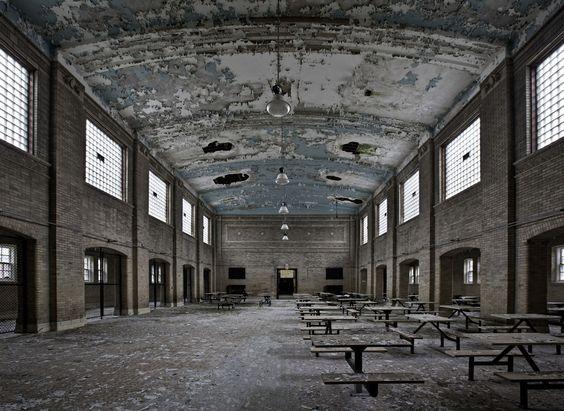



Table of Contents
- Introduction
- Description of What Constitutes an Empty State Building
- Reasons for Vacancy
- Implications and Impact
- Investment Opportunities
- Conclusion
- Faq's
Introduction
An "Empty State Building" in real estate refers to a property that is currently vacant and not in use. These buildings can be commercial or residential and may vary in size, condition, and location. They often become empty due to factors such as economic downturns, shifts in market demand, or changes in industry needs. Such vacancies can lead to decreased property values and negative impacts on surrounding areas. For investors and property managers, empty state buildings present both challenges and opportunities. Effective management and strategic redevelopment can transform these properties into valuable assets, enhancing their contribution to the local economy and urban landscape. Understanding these dynamics is crucial for devising successful strategies to address vacancy issues and maximize the potential of these properties.
Description of What Constitutes an Empty State Building
 Empty State Building: Pinterest
Empty State Building: Pinterest
An "Empty State Building" refers to a property that is currently vacant and not in active use. This term applies to both commercial and residential properties and includes a range of characteristics and conditions:
Vacancy: The building is unoccupied, meaning it lacks tenants or residents. This can be due to various reasons, including changes in demand, economic conditions, or obsolescence.
Type of Property: Empty state buildings can be:
Commercial: Office buildings, retail spaces, warehouses, or industrial facilities.
Residential: Apartments, houses, or condominium complexes.
Size and Scale: The property can vary greatly in size, from small single-family homes or storefronts to large multi-story office towers or apartment blocks.
Condition: The condition of an empty state building can range from well-maintained to dilapidated. Some may be in excellent shape but simply lack tenants, while others may require significant repairs or renovations.
Location: These buildings can be situated in various locations, from bustling city centers and suburban areas to more remote or declining neighborhoods.
Ownership and Management: The building may be owned by private individuals, corporations, or government entities. The level of management and maintenance can vary depending on the owner's priorities and resources.
Potential Uses: While currently vacant, empty state buildings have potential for various uses, such as redevelopment into new residential or commercial spaces, adaptive reuse for different purposes, or temporary uses like pop-up events or community activities.
Reasons for Vacancy
 Commercial Real Estate
Commercial Real Estate
Vacancy in buildings, whether commercial or residential, can result from a variety of factors. Understanding these reasons is crucial for addressing the issues effectively and devising strategies for occupancy or redevelopment. Here are some common reasons for vacancy:
Economic Downturns
Recession: Economic downturns can lead to reduced demand for both commercial and residential spaces. Businesses may close or downsize, and individuals may struggle with unemployment or reduced income, decreasing their ability to afford rent or purchase property
Market Conditions: Fluctuations in the real estate market, such as oversupply or declining property values, can also contribute to vacancies.
Changes in Market Demand
Shifts in Preferences: Changes in consumer or tenant preferences can lead to vacancies. For example, a rise in remote work can decrease demand for office spaces, while changes in housing trends may reduce interest in certain types of residential properties.
Obsolescence: Properties that do not meet modern standards or technological advancements may become less desirable. For example, older office buildings without amenities like high-speed internet may struggle to attract tenants.
Property Condition
Maintenance Issues: Buildings that are poorly maintained or in disrepair may deter potential tenants or buyers. Issues such as outdated facilities, structural problems, or aesthetic concerns can make a property less attractive
Renovation Needs: Properties requiring significant renovations or updates may face prolonged vacancies until improvements are made.
Economic and Regulatory Factors
High Rental Costs: High rental rates or property prices can make it challenging for prospective tenants or buyers to afford the space, leading to extended vacancies.
Regulatory Changes: New zoning laws, building codes, or regulations may impact the usability of a property or its attractiveness to tenants and investors.
Location Issues
Unattractive Locations: Properties in less desirable or declining areas may face higher vacancy rates due to poor location factors, such as lack of amenities, high crime rates, or inadequate transportation links.
Accessibility Problems: Difficulties in accessing the property, such as poor transportation links or insufficient parking, can also affect its occupancy.
Economic and Business Factors
Business Failures: For commercial properties, the closure or relocation of businesses can lead to vacancies. If a major tenant leaves, it may be challenging to fill the space immediately.
Overbuilding: In periods of overbuilding, where the supply of new properties exceeds demand, vacancies can increase as competition for tenants or buyers intensifies
Transition Periods
Development Phases: Newly constructed buildings may experience vacancies during the initial leasing phase or while waiting for the property to gain market traction.
Ownership Changes: Transitions in ownership or management can lead to temporary vacancies as new strategies are implemented or renovations are completed.
External Factors
Natural Disasters: Events such as floods, earthquakes, or hurricanes can render buildings uninhabitable or reduce demand due to the impact on the surrounding area.
Economic Shifts: Broader economic shifts, such as changes in industry or demographic trends, can influence the demand for specific types of properties.
Implications and Impact
 Investment Opportunity: Pinterest
Investment Opportunity: Pinterest
The implications and impact of vacant buildings are significant and multifaceted, affecting various aspects of the property itself, its surroundings, and the broader community. Understanding these effects is essential for property owners, investors, and urban planners to address vacancy issues effectively and mitigate negative consequences.
Economic Implications
Reduced Property Value: Vacant buildings often lead to a decrease in property values, both for the vacant property itself and for nearby properties. This can be due to perceived or actual decline in the neighborhood's desirability and overall economic vitality.
Loss of Rental Income: Property owners face a loss of potential rental income during periods of vacancy. This financial impact can strain budgets, particularly for commercial properties, where extended vacancies can significantly affect revenue streams.
Increased Operating Costs: Even when vacant, properties incur ongoing costs, including maintenance, security, insurance, and utilities. These expenses can accumulate over time, further impacting the property owner's financial situation.
Social Implications
Neighborhood Decline: Vacant buildings can contribute to the decline of surrounding neighborhoods. They may signal economic distress and reduce the overall appeal of the area, which can lead to decreased property values and deter potential new residents or businesses.
Crime and Vandalism: Empty properties are more susceptible to vandalism, theft, and other criminal activities. Lack of maintenance and surveillance can make vacant buildings attractive targets for illegal activities, affecting community safety.
Reduced Community Engagement: When buildings remain vacant, they can detract from the vibrancy of a community. This lack of active use can reduce foot traffic, diminish local business activity, and contribute to a sense of neglect or decline.
Environmental Implications
Urban Blight: Prolonged vacancies can lead to urban blight, where neglected properties and their surrounding areas become eyesores. This can have a broader impact on environmental aesthetics and urban planning.
Waste and Pollution: Vacant buildings that are poorly maintained may suffer from issues such as water damage, mold, or pest infestations, which can contribute to environmental degradation. Additionally, improper disposal of waste or debris can further impact the local environment.
Economic and Development Impact
Missed Development Opportunities: Vacant buildings represent missed opportunities for development and economic growth. Redeveloping or repurposing these properties can provide new housing, commercial space, or community facilities, driving local development and revitalization.
Impact on Local Economy: The presence of vacant buildings can affect local businesses by reducing customer traffic and diminishing the economic activity in the area. Active, well-utilized spaces contribute more to the local economy through increased consumer spending and business operations
Property Management Challenges
Increased Management Complexity: Managing vacant properties can be challenging, requiring ongoing maintenance, security measures, and marketing efforts to attract new tenants. This can strain property management resources and complicate operations.
Potential for Deterioration: Without regular upkeep and occupancy, vacant buildings can deteriorate more rapidly. Issues such as structural damage, pest infestations, and system failures may go unnoticed, leading to more extensive and costly repairs in the future.
Opportunities for Revitalization
Redevelopment Potential: Vacant buildings present opportunities for redevelopment and adaptive reuse. Investing in renovations or repurposing these properties can revitalize neighborhoods, attract new businesses or residents, and contribute to community growth
Community Initiatives: Engaging in community-driven initiatives to address vacancies can foster collaboration between property owners, local governments, and residents. This approach can lead to creative solutions for repurposing vacant buildings and enhancing the overall quality of life in the area.
Investment Opportunities
Investment opportunities in vacant buildings, or "empty state buildings," present a range of potential benefits and strategic advantages. Redeveloping these properties can be highly profitable, whether through converting commercial spaces into residential units, creating mixed-use developments, or repurposing historical buildings for modern uses. Adaptive reuse projects, such as transforming old warehouses into trendy lofts or offices, can capitalize on current market trends and attract diverse tenants. Short-term rental options, like vacation rentals or corporate housing, offer the potential for higher income compared to traditional leases. Additionally, investing in community-focused projects, such as affordable housing or public spaces, can provide both financial returns and social impact.
Strategic partnerships, including joint ventures with developers or participation in Real Estate Investment Trusts (REITs), can further enhance investment opportunities. Embracing sustainable and technological solutions, such as smart building technologies and green building initiatives, can increase a property's attractiveness and operational efficiency. Overall, the key to successful investment lies in understanding market trends, assessing property conditions, and leveraging creative and strategic approaches to unlock the full potential of vacant buildings.
Conclusion
Investment opportunities in vacant buildings offer significant potential for profitability and strategic development. By exploring various approaches such as redevelopment, adaptive reuse, and short-term rentals, investors can unlock the value of these properties while addressing market needs and community requirements. Strategic initiatives like community-focused projects and incorporating sustainable technologies further enhance the attractiveness and operational efficiency of vacant properties. However, successful investment requires careful consideration of market trends, property conditions, and potential risks. Leveraging creative solutions, partnerships, and financial incentives can maximize returns and contribute to the revitalization of neighborhoods. Ultimately, understanding and strategically addressing the unique opportunities and challenges of vacant buildings can lead to rewarding investment outcomes and positive community impact.
explore further
Latest from Did you know?
More from Interactions
Resources
Dwello, for every home buyer, is a way to go from 'I feel' to 'I know', at no extra cost.




